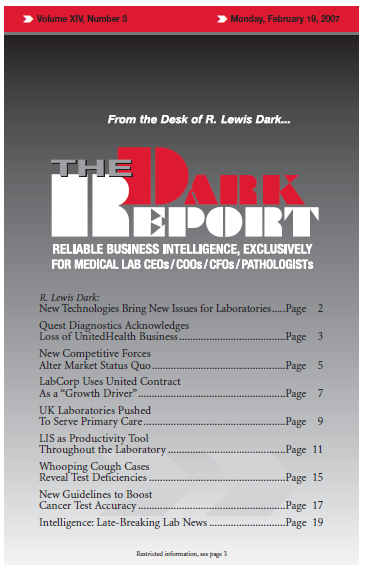CEO SUMMARY: Recent developments in breast cancer testing are leading to changes in pathology. Oncologists and pathologists have issued new guidelines regarding HER2 testing and new research suggests changes may be coming for estrogen-receptor testing as well. For the first time, the new guidelines require a certain level of testing and new procedures for pre-analytical …
New Rules to Boost Cancer Test Accuracy Read More »
To access this post, you must purchase The Dark Report.


